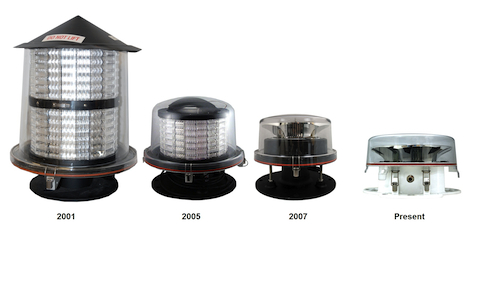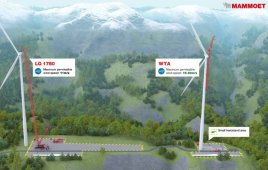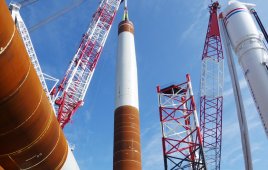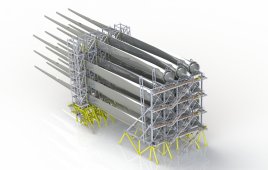Michael Schratz
Dialight Corp.
www.dialight.com
AWEA recently reported that, despite significant challenges in 2010, the U.S. wind-power industry made significant progress on its promise to strengthen America’s position with an increased supply of renewable energy. The organization says all signs point to a strong return in 2011. With an aggressive target of supplying 20% of electricity nationwide by 2030, the industry must add many new turbines and wind farms to the grid.
Some estimates peg the number of new turbines required as high as 65,000 between now and 2030. These increasingly large wind turbines will require more sophisticated internal and external communications to maximize their performance and continued public support.
Similar to communication and broadcast towers, bridges, and other tall structures, wind turbines require obstruction-lighting systems to warn pilots of aviation hazards. Light emitting diodes, or LEDs, have become the technology of choice behind modern aviation obstruction-lighting systems, with adoption and implementation starting nearly 10 years ago.
Historically, LEDs are known for their considerably long life and reliability under extreme conditions. Of all the benefits LEDs provide, the most important for the wind industry is their resistance to shock and vibration. LEDs are solid-state semiconductor devices that require little power, generate little heat, and do not rely on a fragile filament for illumination. They contain no mercury or harmful materials and allow for precise optical control, providing the required lighting for pilots while significantly reducing light-ground scatter and disturbance for nearby residents.

Dialight’s progression of LED L-864 red beacon technology from 2001 to present . Improvements in red LEDs over the years have reduced product size by more than half and cut energy consumption from 200 to 20 W to help owners justify the payback.
In addition, LEDs emit nearly undetectable levels of electromagnetic interference and radio-frequency interference (EMI/RFI), a disturbance often emitted by high-voltage electrical circuits that can interrupt, obstruct, or degrade sensitive radio communications. This interruption can be particularly troublesome for radio systems employed by air traffic control and aeronautical communications services. LEDs resolve this problem with extremely low-emission EMI/RFI to ensure reliable communications.
Compared to the wasteful conventional L-864 incandescent beacons, which consume 1,400 W and may last less than a year, the latest LED-beacon equivalent consumes only 20 W, or roughly 98% less energy – and delivers optimum performance for at least half a decade backed by an industry-standard 5-year warranty. Recent improvements in red and white LEDs allow making products significantly smaller, more efficient, and more intelligent.
For their energy and maintenance savings, durability, and low EMI/RFI emission, LED-based obstruction lighting systems will continue to provide reliable, clean lighting technology for the global wind industry for many years to come.
WPE
Filed Under: Construction, Towers




